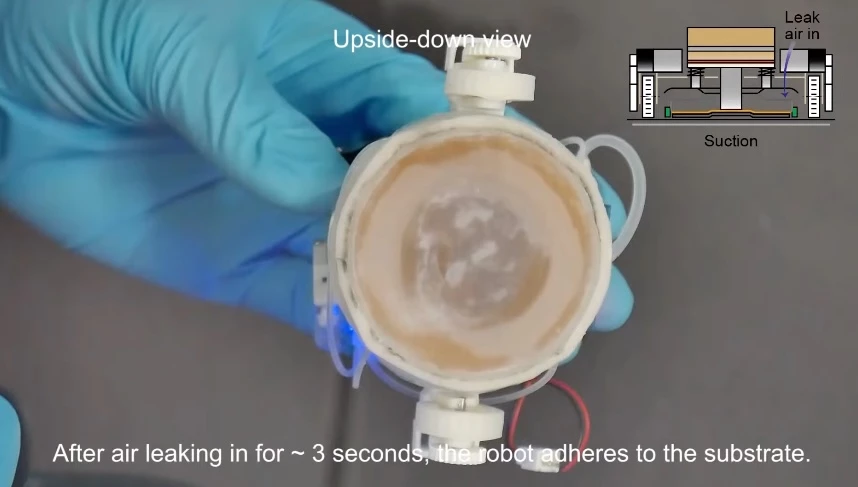Snails are great at climbing vertical surfaces, even though they have just a single wet suction-cup foot. A new bio-inspired robot climbs walls by mimicking that simple yet effective mechanism, although thankfully it leaves a trail of water instead of mucus.
Known as the sliding suction robot (SSR), the proof-of-concept device was created by research associate Tianqi Yue and colleagues at the University of Bristol. The present version weighs just 96 grams (3.4 oz) and fits comfortably in a person's hand, but the technology could be scaled up as needed.
On the bottom of the SSR's rotunda-shaped body is a 50-mm (2-in)-wide suction cup. That cup is made mainly of sturdy, flexible polyurethane, although its underside is composed of a blend of silicone and a hydrophilic (water-attracting) polymer. A ring of highly absorbent foam runs around the perimeter of the suction cup.

The robot is initially pressed firmly onto a wall by hand. This action adheres the bot to the wall, but doesn't allow it to move.
In order for that to happen, water is pumped from an onboard tank, through four silicone tubes and into the foam ring. Capillary action subsequently draws the water out of the foam and across the underside of the suction cup, forming a thin layer of liquid that both provides lubrication and maintains the seal.
Two motorized wheels – one on either side of the suction cup – are then used to propel the robot across the wall. Although some water is left behind on the wall along the SSR's trail, that liquid is continuously replaced to maintain an effective layer on the underside of the cup. Snails move while maintaining suction in much the same way, although they secrete mucus instead of water.
In lab tests, the bot was able to climb vertical sheets of glass and painted metal at speeds of up to 19 mm (0.75 in) per second, plus it could rotate on the spot and even move completely upside-down across the underside of horizontal sheets. It was also able to transport a payload of up to 200 g (7 oz), and withstand a downward pulling force of 1 kg (2.2 lb).
Based on these tests, the scientists estimate that the SSR should have a real-world runtime of approximately one hour per battery-charge. It's important to note, the robot doesn't use any power to maintain suction when it's not moving.
Possible applications for the SSR include the inspection and maintenance of wind turbine blades, ships' hulls, and the windows of skyscrapers.
"We demonstrated that sliding suction offers low energy consumption, high adhesion efficiency and safety, high loading capacity and low complexity, while only leaving a quick-to-evaporate water trail," says Tianqi Yue. "The most exciting finding of our research it that the proposed sliding suction mechanism is a novel clean climbing strategy and will significantly advance the development of the next-generation climbing robots."
A paper on the research was recently published in the journal Nature Communications. You can see the SSR in action (in some cases using an external water supply) in the video below.
And for another recent example of snail-inspired robots, check out The Chinese University of Hong Kong's robo-snails that cling to one another in order to collaboratively perform outdoor tasks.
Source: University of Bristol via Newswise




